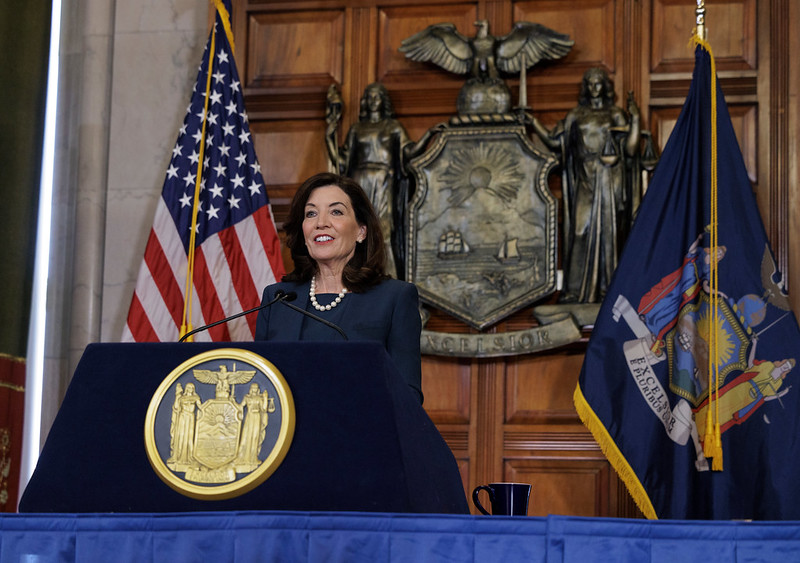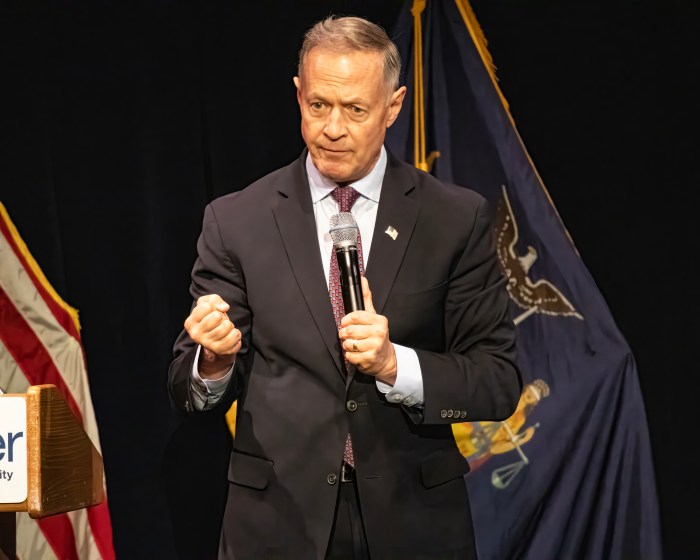Gov. Kathy Hochul unveiled her proposed $216 billion budget for New York State Tuesday, aiming to direct billions in public money toward rebuilding infrastructure, education, and healthcare.
The governor presented her executive budget for the 2023 state fiscal year in a roughly 17-minute virtual address and pitched her spending plan as a chance for the state to reemerge from the COVID-19 pandemic as infection rates have started to slow following the winter surge driven by the Omicron variant.
“We need to embrace this moment of possibility and use it to redefine New York’s destiny,” Hochul said during her speech on Jan. 18. “We hope to close the books on this winter surge soon so we can turn the page and open the book on our 2023 budget outlook and focus on the post-pandemic future.”
The budget includes a $32.8 billion capital plan to repair roads, bridges, build out new transit, and “revitalizing communities,” and Hochul mentioned the proposal to cap the Cross Bronx Expressway among her targets for addressing highways that tear through working-class communities of color.
Another $31 billion will go toward schools across the state and $10 billion to health care, the largest funding for the latter sector in the state’s history, according to Hochul.
Some $25 billion over five years is earmarked for a housing plan to create and preserve 100,000 below-market-rate housing units, including 10,000 with supportive services for vulnerable populations.
Hochul’s massive spending plan benefits from better-than-expected tax revenues, a thriving stock market, and billions in federal pandemic-era aid, including the American Rescue Plan and early funding coming from President Joe Biden’s Bipartisan Infrastructure Law.
“We have the means to respond to this historic moment with an historic level of funding,” she said.
But the package also provides a balanced budget, according to the governor, who said the proposal doesn’t create recurring expenses or new programs the state can’t pay for after Uncle Sam turns off the COVID cash spigot.
“We know that the federal will eventually run out, and that’s why we’re not banking on them for the future,” she said. “So for the first time ever, with smart planning, New York will have no out-year gaps.”
“All these commitments are either one-time expenditures, or are supported by the expectation of a reasonable growth in revenue as projected by our division of budget,” she added.
The proposal will head to the State Legislature for negotiations with the Executive Chamber over the coming months before the approval deadline of April 1.
This story first appeared on amNY.com.
Sign up for Long Island Press’ email newsletters here. Sign up for home delivery of Long Island Press here. Sign up for discounts by becoming a Long Island Press community partner here.
































